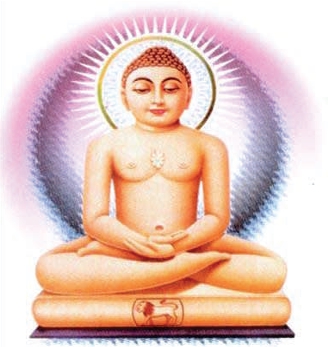
Jainism in the Deccan region had a strong hold. In the regions like Mysore, Kannada and areas of Mumbai and Madras Presidency Jainism had received an upsurge by the royal families.
Numerous temples which are now in ruins to a great extent, as also the inscriptions and literary information prove that Jainism had numerous followers in the past and that it experienced a great boom in Maharashtra, in the Kannad region, i.e., in the southern districts of the Bombay Presidency, in the northern part of the Madras Presidency and in the princely states of Hyderabad and Mysore. A whole series of rulers from different dynasties ruling in these regions were either themselves Jainas or they supported at least a great number of their subjects in a effective manner by giving them grants or endowments.
The Maharashtra-Prakrita language used by Swetambaras for their literary purposes originated in Maharashtra, the powerful empire, which was ruled by Andhra-kings from their capital Pratisthana in the centuries around the birth of Christ. A king of the princedom founded by Satavahana Kings, Hala Satavahana, is considered as an author or a compiler of a famous anthology of Prakrita-verses, and Jainas rank him among their four learned kings (Vikramaditya, Satavahana, and Munja Bhoja). But it is uncertain, whether Jainas can claim rightfully this Hala and the other kings from the Andhra-dynasty having the surname Satavahana, because the rulers of this house residing in Dhanyakataka were doubtlessly active Buddhists and they have erected one of the most beautiful monuments to Gautama`s religion in the Stupa of Amaravati.
The influence of Jainas extended over the whole continent from the western to the eastern coast. Inscriptions and other documents prove that it was as much dominant in the language-region of "Maharashtra" as in the Kannada and Telugu regions till up to Orissa. Epigraphical findings show that Jaina-settlements and Jaina-temples certainly existed in the past in the present districts of Vishakapatnam, Krishna, Nellore etc.
Jainism, however, played quite a prominent role, in the history of Kannada-regions. These were the main seat of Digambaras in the old period. According to the tradition, Jainism was brought by Bhadrabahu in these regions, when he immigrated with a group of monks to Mysore during the famine in Bihar.
The masters Samantabhadra, Pujyapada and Akalanika promoted to a great extent the spread of Jainism in the Deccan. It is said that Samantabhadra had devoted himself in his youth to such a strict mortification that he got disgusted with his life and wanted to starve himself to death. But his teacher dissuaded him from it and thus saved for Jainism one of their most enthusiastic missionaries. It is said that Samantabhadra visited the whole Indian subcontinent on his lecture tour. Pujyapada also travelled a great deal till he reached Bihar to spread the faith; it is also said that he had miraculous powers. But he carried above all his literary activity in several fields; he not only treated the Jaina philosophy with great mastery, but he was also an authority in the field of medicine.
The Gangas ruled over the largest part of Mysore and the surrounding regions from the 2nd to the 11th century A.D. Their inscriptions are found from Coorg in the west to north Arcot and Tanjore in the east, from the extreme south of Mysore to the district and Belgauni of the Bombay Presidency in the north. It is said that the might of the Gangas was founded by a Jaina-ascetic Simhanandi.
The significance of Jainas for the spiritual life of Kannadigas and their neighbours was indeed very great. In ancient period, they were indisputably the most important, and the only promoters of cultural endeavour. It is, therefore, no wonder that the whole Kannada literature up to the midst of the 12th century was exclusively Jaina-literature, and Jainism occupies even later a prominent place in Kannada writings. The most ancient and the greatest products of Kannada spirit have, therefore an unmistakable stamp of Jainism. The same is also true for formative arts. Even in this field, Jainas had an epoch-making influence in these regions, as it is evident from the mighty temples, Basils and Bettas, the great statues of Gommata and other monuments.